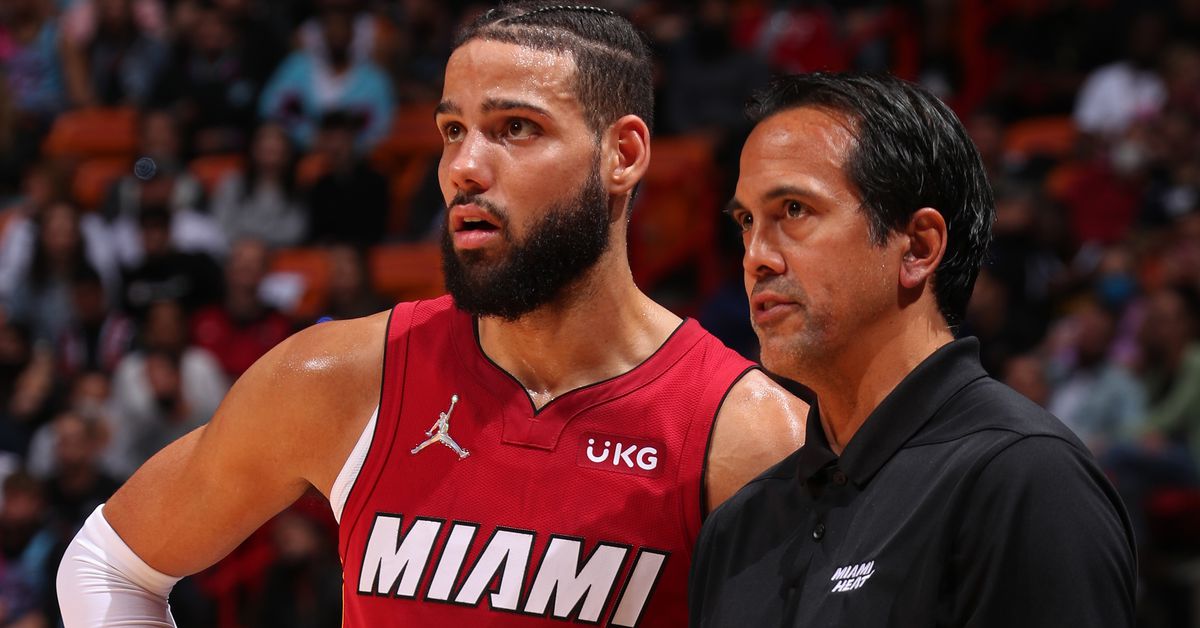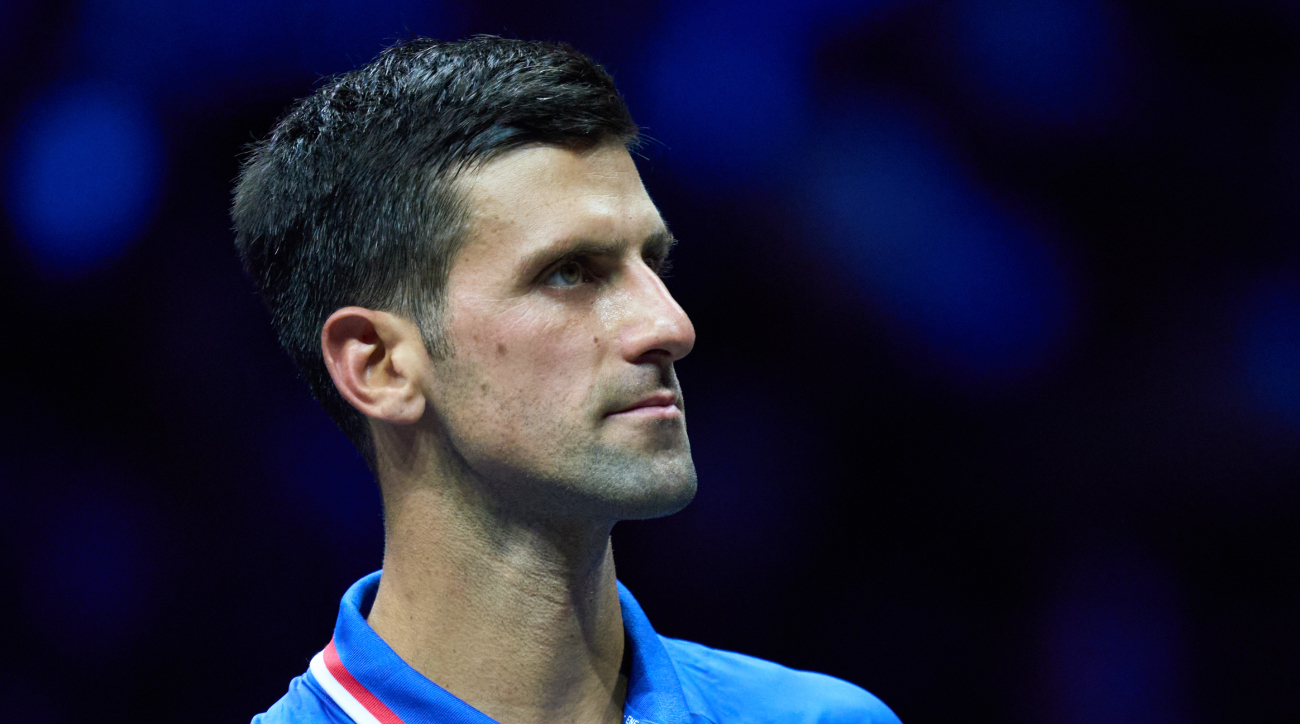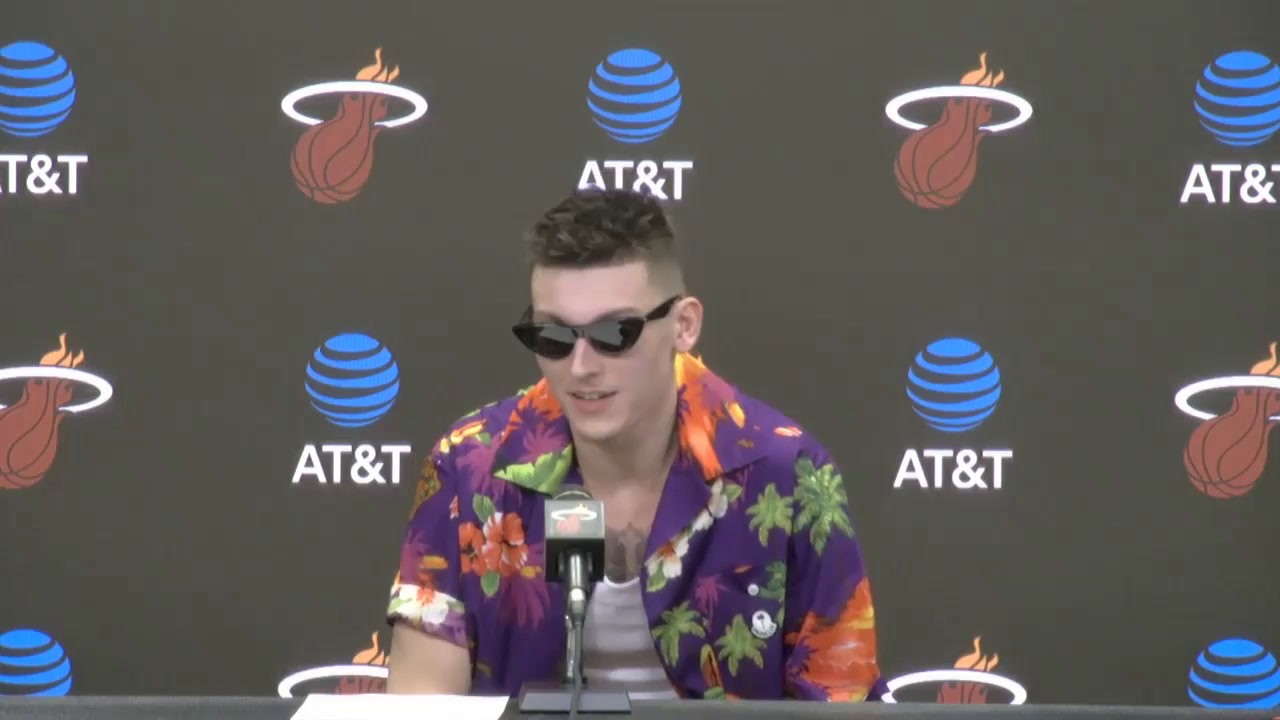Is Caleb Martin ready to be Miami Heat’s starting 4?

In late November against the Denver Nuggets, the Miami Heat were down three players: Jimmy Butler (tailbone), Tyler Herro (illness) and Markieff Morris (neck), who got hurt in the infamous Nikola Jokic incident earlier that month in Denver.
Entrusted by his teammates and, most importantly, head coach Erik Spoelstra — Heat wing Caleb Martin, who they signed to a two-way contract mere months earlier, was thrusted into the starting lineup in lieu of Butler.
Martin had not have played more than 26 minutes in any of his first 17 games with Miami, averaging 5.1 points, 2.8 rebounds, 0.9 steals and 0.5 blocks in 16.4 minutes over that stretch — equating to a productive 11.3 points, 6.1 rebounds, 2.1 steals and one block per 36 minutes of action.
In 33 minutes against the Nuggets, he posted 18 points, four boards and an assist on 8-of-15 shooting, including 2-of-4 from 3-point range. Though Miami lost, Martin still provided a well-rounded blend as a transition spark, floor spacer and tough shotmaker on the interior.
His next start — nine days later, also in-place of a hobbled Butler — showcased arguably one of the team’s most impactful individual outings of the entire regular season. And it came against the then-reigning defending champion Milwaukee Bucks.
Martin scored a career-high 28 points with eight rebounds, three assists and a pair of blocks. He sunk nine of his 12 baskets, including 6-of-8 from beyond the arc and a perfect 4-of-4 from the charity stripe.
“How could you not like Caleb Martin?” Max Strus said after the Dec. 9 win. “The dude just plays extremely hard, no matter what the circumstances. Every night he’s locked in.
“How do you not want a guy on your team like that?”
And Strus is right — how could you not want a guy like that on your team? Not everyone will, for some reason, but everyone inarguably should, but I digress.
In total, Martin started 12 games with Miami last season — with the team going 8-4 in such games. A few notable wins came against the Toronto Raptors, Atlanta Hawks (twice), Phoenix Suns and the aforementioned Bucks. In those starts, he posted 13.7 points, 5.3 rebounds — 1.8 offensive boards — 0.7 steals and 0.8 blocks per game. Martin shot 52.8 percent from the floor (61.3 percent from 2) and 40.0 percent from 3-point range, sporting an above-average true-shooting mark of 62.9 percent.
None of that directly correlates to Martin’s direct impact on the game. Even though he was entering his third season in the league, not a lot seemed like it was going to be asked of Martin when he inked that two-way deal that he eventually parlayed into a standard contract. Until there was. And during those dire instances, he responded.
Now, it begs the question: With a P.J. Tucker-sized gap at the 4-spot, is Martin ready to fill the void?
Let’s make the case.
On the first day of free agency in late June, Tucker inked a three-year, $33.2 million deal with Eastern Conference rival Philadelphia 76ers, eating up their entire mid-level exception but made the Sixers a much tougher, nastier out.
Consequently, Miami’s starting power forward spot has yet to be unclaimed. And we might not who claims until the full answer to that question until the trade deadline, but Martin might have the best chance at snatching that acclaimed gig — for now — come mid-October.
Martin and Tucker aren’t wholly analogous, but that doesn’t mean they’re also aren’t completely dissimilar.
Tucker’s thankless duty was spearheaded by his “all gas, no brakes” toughness and his resounding impact on the defensive end — positionally, physically and, perhaps the most unknown to those who aren’t seeing it live, verbally.
One night, the 6-foot-5 forward could be tasked with shutting down Hawks sharpshooter Trae Young at the point-of-attack — something he was asked to do plenty in the playoffs. The next night, he could be relied upon, by his peers and many others, to physically impose his will against Kevin Durant in hopes of stimulating the scoring punch that one of the NBA’s greatest scorers provides on a night-to-night basis.
In addition to his defensive impact, he made valiant efforts on the offensive glass, as a hand-off initiator, screener and as a corner 3-point specialist.
Defensively, Martin isn’t necessarily different. He willingly took on — and held up — against Young, Khris Middleton, Pascal Siakam, Stephen Curry (!!) and Bradley Beal, among others. Martin’s quick-twitch and instincts allows him to keep up with more nimble wings, though his thinner frame (compared to Tucker) might limit his defensive upside against bigger 4’s.
Martin wasn’t as active as a screener, logging roughly a-fourth of the screen assists as Tucker on a per-minute basis, but his off-ball movements consisted of more self-creation characteristics (cuts, flying around screens, etc.) to better suit Miami’s offensive’s output.
As an igniter, the soon-to-be 26-year-old flourished in transition. He finished in the 71st percentile in transition, posting 1.23 points per such play as one of its most frequent transition scorers, per Synergy. His pristine touch, gazelle-like speed/strides combined with his high-flying athleticism allowed him to finish around the rim — especially in fastbreak opportunities.
Perhaps the biggest difference between the two players: Martin was capable of spacing the floor from above-the-break and flashed ability to create off-the-dribble.
Here’s a look at last year’s shot chart, for comparison.
P.J. Tucker’s shot chart:
NBA.com
Caleb Martin’s shot chart:
:no_upscale()/cdn.vox-cdn.com/uploads/chorus_asset/file/24006133/shotchart.png)
NBA.com
At times, Tucker’s 3-point spacing wasn’t effective enough, allowing opposing defenders to shut off driving lanes for Jimmy Butler and Bam Adebayo and pinch the floor. That occurred with Martin as well, but he was willing to take more 3-point attempts ATB or put the ball on the deck to further bend defenses — at least more than Tucker.
Martin was one of Miami’s best catch-and-shoot shooters last year, too, knocking down 40.2 percent of his spot-up attempts from distance. With Tucker’s departure combined with a bigger role for Oladipo, possibly means an uptick in those opportunities for Martin this upcoming season.
But he might also be tasked with more playmaking duty at the elbows and above the break as a hand-off initiator — a role he wasn’t utilized in much last season. Neither was Tucker before he was thrusted into the Heat offense; the DHO is a Spoelstra staple, and Martin’s spry rim-running offers intriguing upside that could turn into a lethal finishing act.
Martin will probably have to develop a sustainable floater — like Tucker did — to really accentuate the offense, but his vertical athleticism already supersedes Tucker’s, making the add not as necessary for the immediate future.
Point is: Martin and Tucker possess a few intriguing traits, but they’re not the exact same player. The former might possess more offensive upside than his predecessor, while the defense is still a bit behind. But that might be a trade-off Miami could live with, at least for now. Playing alongside Adebayo and Butler — two perenniel defensive stalwarts — certainly has its benefits.
If Martin is able to switch and at least hold his ground on the defensive end, they’ll still be a top-flight defense. Offensively, he can, again, space the floor ATB and create off-the-dribble better than Tucker.
Nevertheless, it’s forseeable to envision Martin excelling within that role — regardless of how similar or not similar he is to Tucker. But only time will tell if he really is ready for that arduous task.
“I feel like I can step in and start. It doesn’t matter what the role is and what a team needs from me, I feel like I can fill that void,” Martin said during his exit interview. “My game expanded shooting-wise, being more efficient and consistent … I feel like I took big steps and I feel like I’m only going to take larger steps going forward.”


